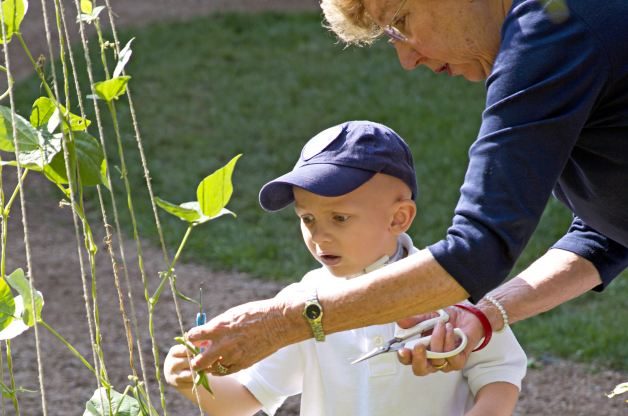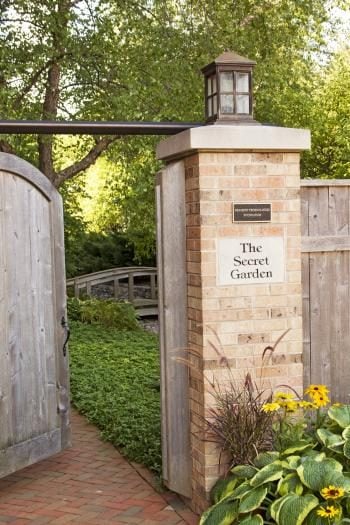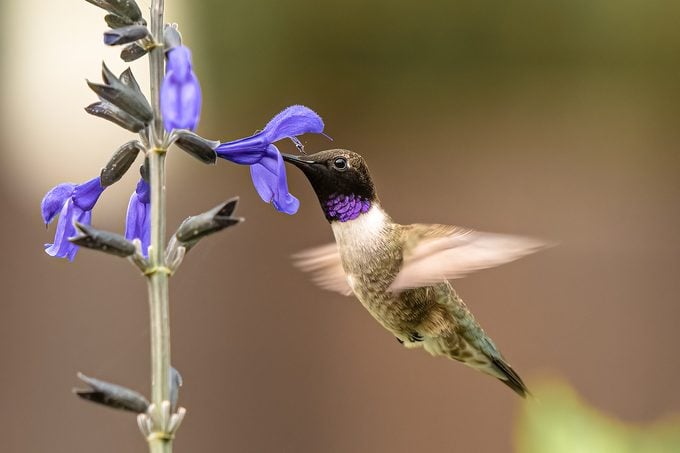Plant a Healing Garden for Health and Wellness
Updated: Dec. 15, 2021

Healing happens outside too, and therapy gardens are becoming more popular. Learn how to choose therapeutic healing garden plants.
Our editors and experts handpick every product we feature. We may earn a commission from your purchases.
When we think of health care, we often look within the walls of hospitals and clinics. But what grows just outside some of those walls promotes healing, too. We’re talking about roses that restore, hydrangeas that bloom with hope and salvia that smell of solace. These natural aids to wellness grow in the healing garden plants that many medical facilities today are growing and tending.
Marni Barnes, a landscape architect who designs and consults on the creation of such landscapes, puts healing gardens in two categories: restorative and enabling. “Restorative gardens are designed to provide benefits to people who are simply in the space or able to look out at the space,” says Marni, author of the book Healing Gardens: Therapeutic Benefits and Design Recommendations. “These gardens provide respite, which bolsters our internal healing mechanisms. Enabling gardens provide therapeutic benefit to people who are actively engaged in tending or harvesting the plants that grow there.”
A dose of nature: Why birding will boost your mental health.
Ronald McDonald House Secret Garden

Designing a healing garden means recognizing the physical, psychological, social and spiritual needs of different kinds of patients, such as children or the elderly. Take the Ronald McDonald House of Eastern Wisconsin, which offers short- and long-term residence to families with children seeking treatment for injuries or illness at nearby hospitals. For these families, the house literally becomes a home away from home. And the lush Secret Garden, appropriately named after the children’s book, tucked just behind the building? That’s their backyard.
Planted in 2002, this half-acre organic garden features hundreds of labeled plants that stimulate the senses in some way. Visitors to the four-season garden can play board games in the pagoda, climb on the big wooden play set, meander through the colorful Alphabet Garden or stumble upon the miniature Fairy Garden. “It’s a place for parents to go and reflect, re-energize and meditate,” says staffer Jacquelyn Wahlberg. “For the children, it provides an outlet for their energy, smiles and laughs, and a sense of normalcy.”
Other features are pathways paved with wheelchair- and stroller-friendly crushed gravel. There’s a council circle surrounded by fragrant roses, where families can gather to pray or talk. A large water feature is shallow enough for small children to safely play near. Also look for a produce garden where sun-kissed Japanese eggplant, cherry tomatoes and a variety of fresh herbs grow in raised beds.
“When you come through the garden gate, you’re greeted with a sense of harmony and peace,” says Ann Philips, lead gardener and one of the 16 volunteer University of Wisconsin Extension Master Gardeners who help tend the garden. “We purposely repeated several plant families to give the garden continuity, but also provided some surprises to stimulate the imagination. As I always say to our families, ‘Whatever you’re looking for, you’ll find it in the Secret Garden.’ ”
The garden is also a certified National Wildlife Federation Backyard Habitat. It welcomes butterflies and birds and emphasizes native plants, such as butterfly weed, columbine, purple coneflower and river birch.
Alzheimer’s Gardens
Children and their families aren’t the only ones who are able to reconnect with their roots in a healing garden. More and more, therapy gardens are being incorporated into landscapes that support an aging population, such as retirement homes or facilities that specialize in Alzheimer’s or dementia care.
“In Alzheimer’s facilities, enhancing memory and supporting visits from family and friends are the main goals,” says Marni. “Plants that are familiar, especially fragrant ones, are helpful in triggering memories. Signs with interesting information or literary quotes can stimulate conversation, and a path for residents to pace is important during the middle stages of dementia.”
Alzheimer’s gardens are often enclosed to provide a sense of security. They feature wide, level pathways or labyrinths, nonglare surfaces, social spaces, benches where patients can rest and familiar features like wind chimes, clotheslines and bird baths.
How to Choose Healing Garden Plants

When starting a healing garden, plant selection is key. But the options can be overwhelming.
“Choose healing garden plants that command awareness, either through their own characteristics or because they attract wildlife,” suggests Marni. “The best plants are ones that stimulate the senses and lift a person out of their worries and into the present moment.”
Marni’s personal favorites are ornamental grasses that sway in the wind, bringing attention to a soft breeze. Or tall bamboo — its foliage becomes iridescent when backlit and can bring light into a shady courtyardy. It also makes a soft clacking sound in the wind.
“Try plants that have an intricate or delicate flower, such as fuchsia or snapdragon,” says Marni. “They can draw one into their miniature world. Salvia and sage have great color, their foliage is pungent when crushed, and they attract hummingbirds and butterflies. And trees with interesting bark can prompt one to reach out and touch it.”
Especially in an Alzheimer’s garden, choose plants that trigger positive emotions from a person’s past, such as old-fashioned hollyhocks, lavender or lilacs. Even herbs may help elicit memories of Sunday dinners gone by.
Healing gardens prove that one should never underestimate the restorative power of nature. It connects us, it heals us, and it awakens memories or provides new and happier ones in times of trouble.
